How to distinguish quality spices from fakes: basil

WARNING! CHEESE INDEPENDENT RAW MILK IN APPROXIMATION - THIS IS DANGER FOR LIFE
Basil (Latin Ocimum basilīicum) is an annual plant whose leaves have juicy flavors of nutmeg, pepper and peppermint, slightly bitter taste, with a sweet taste. It is widely used in cooking as a condiment. Stand out green basil (Ocimum basilicum var. Pilosum) and purple / black basil (Dark opal basil).
Spice can be found in regions such as Iran, Ukraine and Russia. However, on an industrial scale, basil is grown in Egypt and the countries of Southeast Asia.
In the basilica, the most valuable leaves without stems.

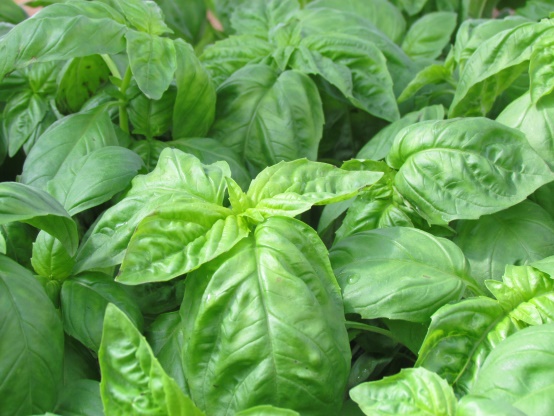
Application in cooking
To taste the basil is bitter, with a sweet taste, the smell is similar to nutmeg. Its leaves and flowers are used in traditional national cuisines of Greece, France, Italy, Asia and the countries of the Caucasus.
In dry form, the basil is used as a spice, which gives the dish a special piquancy, aroma and taste. The dried basil is as useful as fresh.
Basil perfectly complements dishes with chicken, fish, soups, seafood, tomatoes, mushrooms, salads, cheeses. It is also used as a flavoring agent for vinegar and saltiness.
Fresh and dried leaves and basil flowers are relevant to pasta, pizza, sauces (is the main ingredient for pesto sauce), as well as in smoked, sausage products, in the manufacture of alcoholic beverages, especially liqueurs.
Basil leaves can be mixed with other seasonings or spices: onions and garlic, rosemary, pepper, thyme, sage, oregano and marjoram, parsley and mint.
To preserve the aroma of basil, add it to roasted, boiled dishes and soups 10 minutes before being ready.
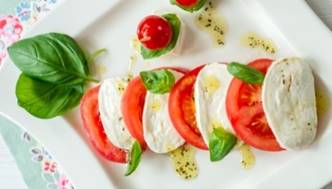
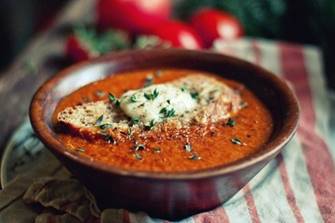
Useful properties of the basilica
Basil contains glycosides, saponins, minerals, ascorbic acid, sugars, fiber, proteins, vitamin P, provitamin A, camphor. Essential oil, which is part of the basil, contains eugenol, metilhavicol, cineol, linalool, camphor, and evaluations.
Due to this basil:
- Provides anti-inflammatory action (helps to fight inflammation in the human body)
- Protects against arthritis
- It possesses antibacterial properties (essential oils of basil help to fight harmful bacteria and microbes)
- Protects cells from aging (basil is rich in antioxidants)
- Helps to fight cancer (prevents the spread of malignant cells and stimulates the death of harmful cells)
- Helps to treat diabetes (lowers glucose levels in the blood)
- Protects the liver (reduces the accumulation of fat and stimulates the excretion of toxic substances from the body)
- Helps relieve stress (relieves weakness, increases endurance, energy and mental activity)
- Basil has the properties of an aphrodisiac
- Improves blood coagulation
- Supports metabolism of the human body
- Saves the health of the thyroid gland (thanks to manganese, which is part of the basil, it contributes to the proper functioning of the thyroid gland).
- Helps to maintain good vision (basil is rich in beta-carotene, which reduces the chances of deterioration of vision).
Basil in medicine
The medicinal properties of green basil are studied, which are mainly related to the presence of camphor in it. From basil get camphor oil, camphor alcohol, camphor bromide. In folk medicine basil is used for epilepsy, migraine, chronic gastritis with secretory insufficiency, chronic colitis, with vomiting, severe spiny pains, bronchitis and pertussis, cystitis, etc. Phytotherapists recommend basil in disorders of blood circulation, asthenia, with respiratory depression and kidney diseases, inflammation of the urinary tract.
Basil in cosmetology
In cosmetology, basil essential oil is often used. It has a rejuvenating effect, removes inflammation, smoothes wrinkles. Basil oil is part of creams and lotions for the skin of the face and body, toothpastes and rinses, shaving products, perfumery products (basil is primarily used to create male fragrances and spices with spicy aroma).
Basil in gardening
Gardeners like basil not only because it is a good spice-aromatic plant, but also because it has insecticidal properties. Planted among other garden grasses, basilicum bushes can save "neighbors" from spider mite, aphids and a number of other insect pests. In addition, the basil is a honey mass, it attracts to the area of bees, bumblebees, butterflies, which pollinate not only it but also other plants.
IMPORTANT TO KNOW! The most valuable in the basilica is the amount of essential oils.
Essential oils - responsible for the characteristic taste and aroma of the basil, the largest concentration of essential oils is found in the leaves of the plant.

Basil leaves contain up to 2% essential oils, but when dried and peeled, the leaves of the basil are stored, some of the essential oils evaporate.
Density - characterizes the degree of weediness of raw materials (mixing in the raw materials of stems, inflorescences and sticks).
Low density is an indicator of the high quality of raw materials. This means that only basil leaves are used for raw materials, without the addition of dried stems and sticks. Such raw materials are much more expensive than raw materials with high density.
To determine the density, you need at least 100-200 grams of dried basil.
Step 1. In a capacity of 0.5 liters basil is poured (it is important not to carry out "utruku"),
Step 2. The amount of raw materials that fit into 0.5 liters is weighed and multiplied by 2. This will be the density index - gram per liter (g / l).
For basil, the optimal density, indicating the absence (or presence of a small amount) of stems and rods is a density of 115 g / l to 170 g / l maximum. The high density will be an indication of the use in the drying process not only of leaves, but also stems that do not contain essential oils and do not carry useful elements.
QUALITY OF DRY BASIL DEPENDS ON QUALITY OF LEAVES OF BASIL FROM WHICH HE IS MANUFACTURED!
For the dried greenery of the basil TM "Priprazka" uses leaves that are the most valuable when grinding basil, so the share of essential oil of dried basil is at least 0.8%, which corresponds to EU standards.
ATTENTION! FALSIFICATION OF QUALITY
An unscrupulous producer uses a number of ways to falsify quality in order to reduce the cost of spicery.
 The smaller the fraction of spice, the easier it is to falsify.
The smaller the fraction of spice, the easier it is to falsify.
Fine grind conceals the true composition of the spice, so it is almost impossible to determine the quality of raw materials.
The main ways of falsifying the basil and cheaper raw materials by unscrupulous producers:
- Adding olive leaves, as well as parts of other plants.
- The use of low-grade raw materials with the presence of a large number of stems, rods and inflorescences.
- Use of raw materials with the presence of: Dust, dirt, glass, branches, stones, excrement of animals and larvae, remains of insects, metallic impurities
- Packaging of raw materials with unacceptable safety indices - exceeding the standards for microbiology, heavy metals, pesticides, etc.
- Use of raw materials with a dusty fraction. The fine fraction hides the true composition of the spice, therefore in quality raw materials no more than 5% of the fine (dusty) fraction is allowed.
ATTENTION! FALSIFICATIONS
Sticks, stems Olive leaves
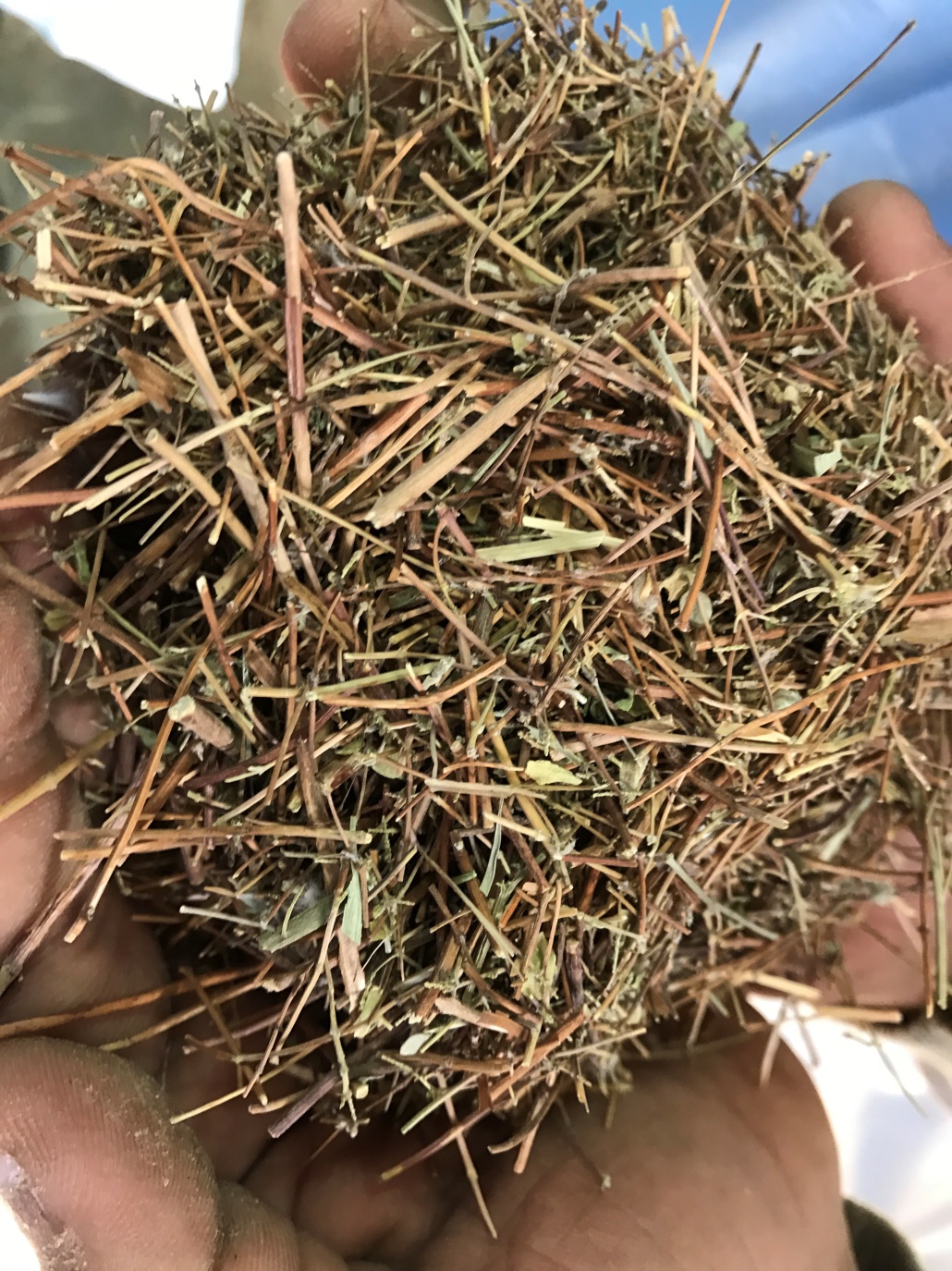
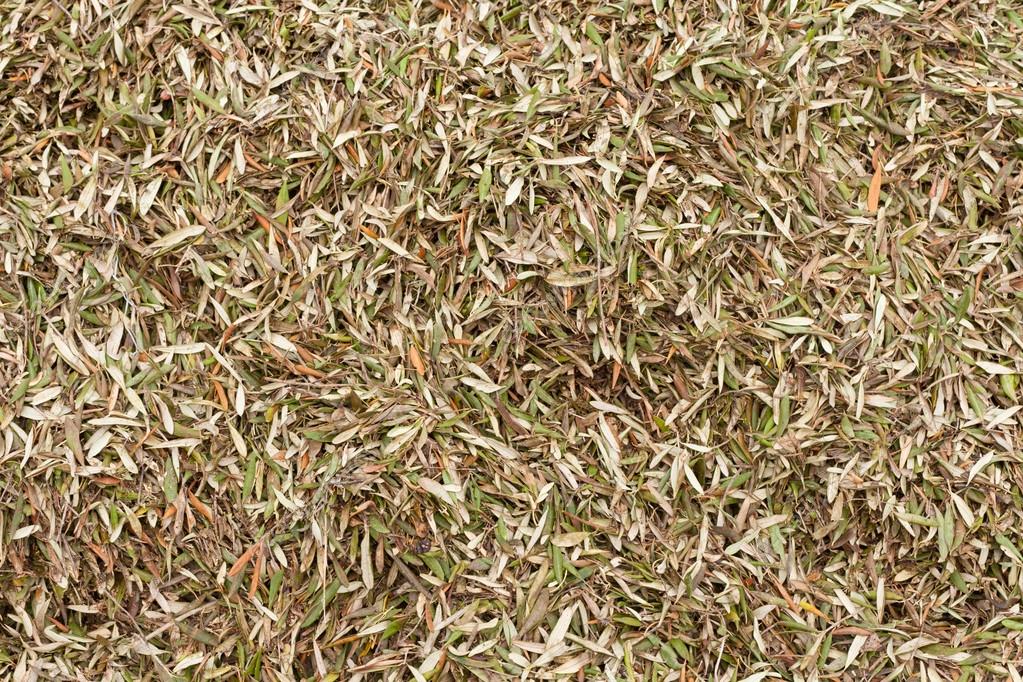
Quality Dried Basil
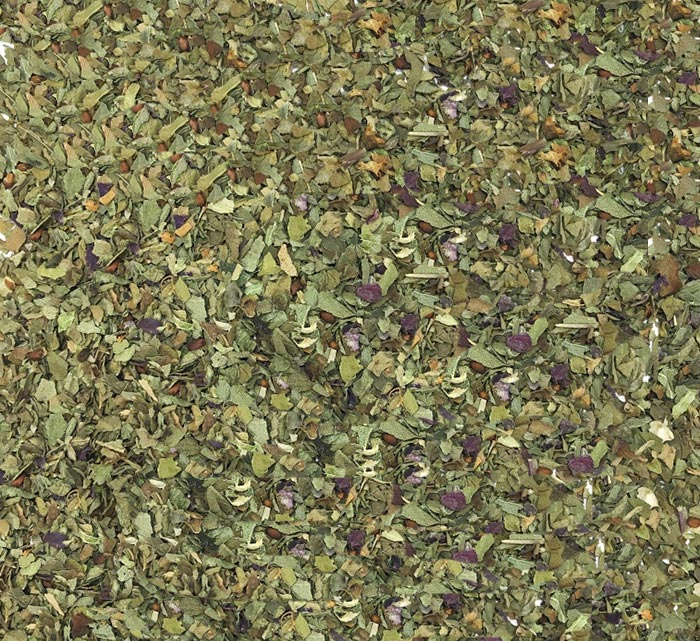
BASIL. QUALITY TEST (NOT LABORATORY)
Quality dried basil has a uniformly colored color of characteristic shades from dark brown to dark green, homogeneous grinding, friability.
The leaves containing essential oils have a pronounced aroma, similar to the aroma of nutmeg, and a bitter taste with a sweetish flavor.
1. VISUAL EVALUATION OF DRY BASIL
It is necessary to pour a thin layer of dried basil on a sheet and evaluate:
- Number of sticks, stems and inflorescences
- Presence / absence of fine dusty particles
- Color and color saturation of dried basil leaves
2. ARGANOLEPTIC EVALUATION OF DRY BASIL
To organoleptically check the raw materials, you need to grind a small amount of basil between fingers or hands in order to completely reveal the aroma of the spice.
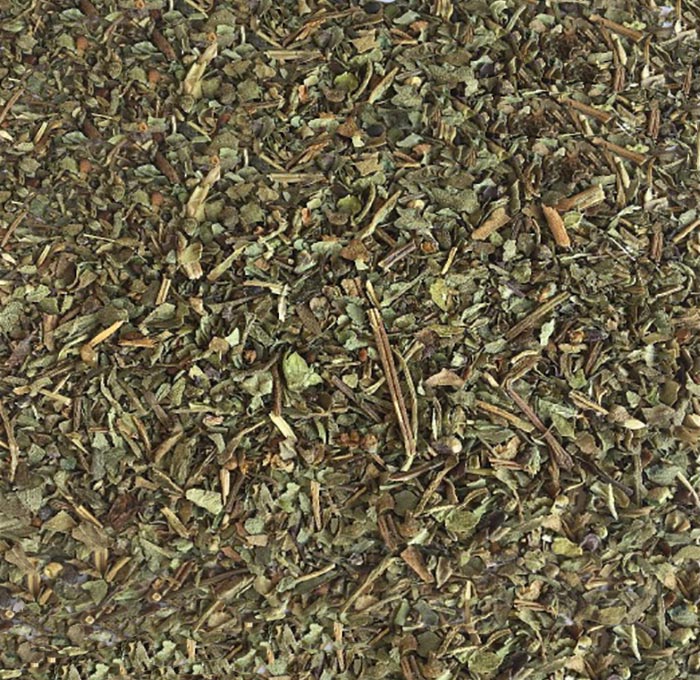
Sample number 1. Low quality.
Raw materials have an uncharacteristic smell of meadow grasses and a large number of sticks and inflorescences.
S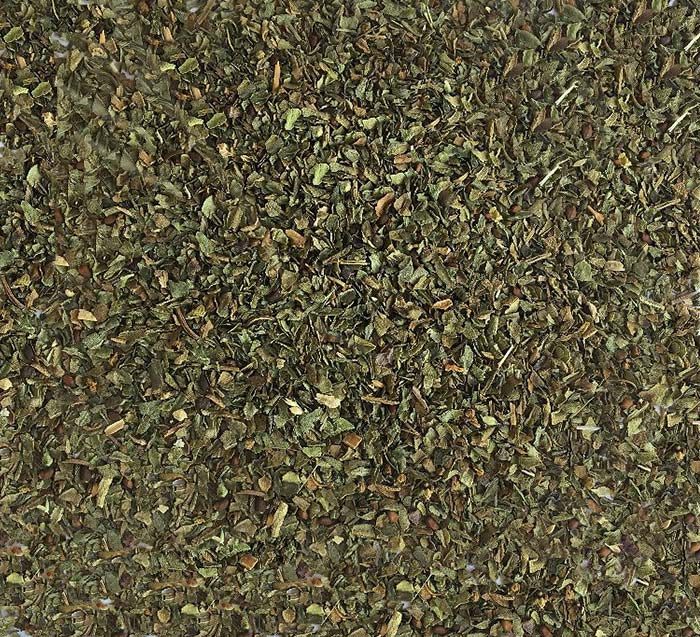 ample №2 TM "Seasoning". High quality.
ample №2 TM "Seasoning". High quality.
Raw materials have a characteristic dark green color and a spicy aroma characteristic of the basil.
3. DETERMINATION OF THE QUANTITY OF WRINKLES, STEPS AND YELLOW INCLUSIONS
Raw materials are scattered in the amount of 10 grams on the table and by hand using tweezers or another similar tool, yellow, damaged leaves, stems, sticks in raw materials are selected.
The smaller the number of selected sticks, stems and yellow inclusions in the raw material, the better the raw material. Quality basil will have a characteristic aroma (similar to nutmeg) and a bitter taste with a sweetish flavor. This basil will be just enough pinch to give the dish the desired flavor characteristics.
Sample number 1. Low quality. Contains most of the sticks, stems and yellow inclusions. This indicates a low quality of raw materials.

Sample number 2. TM Pripravka contains a small portion of sticks, stems and yellow inclusions, which indicates a high quality.

AND WHAT ARE YOU PAYING MONEY?
Basil TM "Pripravka" passes 7 degrees of purification of raw materials:
- Culling out lots of raw materials that do not meet food safety standards
- Magnet - cleaning from magnetized metal impurities
- Vibration cleaner - cleaning of plastic, glass, garbage
- Destoner - cleaning of stones, earth
- Aspiration - cleaning from dust, insects
- Separation - removal of rotten, mold-damaged raw materials
- Metal Detector - cleaning from non-magnetized metal impurities
TM "PRIPRAVKA". FOOD SAFETY IS GUARANTEED!
13 June 2017 Previous
Previous